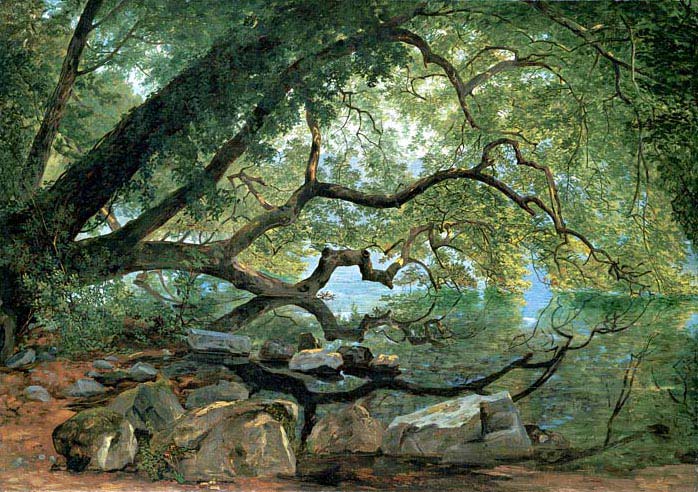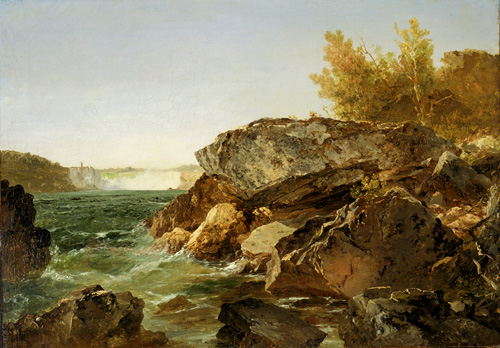John Frederick Kensett (1816-1872)
Get a Kensett Certificate of Authenticity for your painting (COA) for your Kensett drawing.
For all your Kensett artworks you need a Certificate of Authenticity (COA) in order to sell, to insure or to donate for a tax deduction.
Getting a Kensett Certificate of Authenticity (COA) is easy. Just send us photos and dimensions and tell us what you know about the origin or history of your Kensett painting or drawing.
If you want to sell your Kensett painting or drawing use our selling services. We offer Kensett selling help, selling advice, private treaty sales and full brokerage.
We have been authenticating Kensett and issuing certificates of authenticity since 2002. We are recognized Kensett experts and Kensett certified appraisers. We issue COAs and appraisals for all Kensett artworks.
Our Kensett paintings and drawings authentications are accepted and respected worldwide.
Each COA is backed by in-depth research and analysis authentication reports.
The Kensett certificates of authenticity we issue are based on solid, reliable and fully referenced art investigations, authentication research, analytical work and forensic studies.
We are available to examine your Kensett painting or drawing anywhere in the world.
You will generally receive your certificates of authenticity and authentication report within two weeks. Some complicated cases with difficult to research Kensett paintings or drawings take longer.
Our clients include Kensett collectors, investors, tax authorities, insurance adjusters, appraisers, valuers, auctioneers, Federal agencies and many law firms.
We perform John Frederick Kensett art authentication, appraisal, certificates of authenticity (COA), analysis, research, scientific tests, full art authentications. We will help you sell your John Frederick Kensett or we will sell it for you.

Artist John Frederick Kensett was born on March 22, 1816 in Cheshire, Connecticut, and died on December 14, 1872 in New York City. He attended school at Cheshire Academy, and studied engraving with his immigrant father, Thomas Kensett, and later with his uncle, Alfred Dagget. He worked as engraver in the New Haven area until about 1838, after which he went to work as a bank note engraver in New York City.

In 1840, along with Asher Durand and John William Casilear, Kensett traveled to Europe in order to study painting. There he met and traveled with Benjamin Champney. The two sketched and painted throughout Europe, refining their talents. During this period, Kensett developed an appreciation and affinity for 17th century Dutch landscape painting. Kensett and Champney returned to the United States in 1847. After establishing his studio and settling in New York, Kensett traveled extensively throughout the Northeast and the Colorado Rockies as well as making several trips back to Europe.
![]()
Kensett is best known for his landscape of upstate New York and New England and seascapes of coastal New Jersey, Long Island and New England. He is most closely associated with the so-called “second generation” of the Hudson River School. Along with Sanford Robinson Gifford, Fitz Hugh Lane, Jasper Francis Cropsey, Martin Johnson Heade and others, the works of the “Luminists,” as they came to be known, were characterized by unselfconscious, nearly invisible brushstrokes used to convey the qualities and effects of atmospheric light. It could be considered the spiritual, if not stylistic, cousin to Impressionism.

In 1851 Kensett painted a monumental canvas of Mount Washington that has become an icon of White Mountain art. Mount Washington from the Valley of Conway was purchased by the American Art Union, made into an engraving by James Smillie, and distributed to 13,000 Art Union subscribers throughout the country. Other artists painted copies of this scene from the print. Currier and Ives published a similar print in about 1860. This single painting by Kensett helped to popularize the White Mountain region of New Hampshire.
.jpg)
Kensett’s style evolved gradually, from the traditional Hudson River School manner in the 1850s into the more refined Luminist style in his later years. By the early 1870s Kensett was spending considerable time at his home on Contentment Island, on Long Island Sound near Darien, Connecticut. It was during this time that Kensett painted some of his finest works. Many of these were spare and luminist seascapes, the prime example being Eaton’s Neck, Long Island (1872) now in the collection of the Metropolitan Museum of Art in New York.

The artist was widely acclaimed and financially successful during his lifetime. In turn, he was generous in support of the arts and artists. He was a full member of the National Academy of Design, the founder and president of the Artists’ Fund Society, and a founder and trustee of the Metropolitan Museum of Art. Kensett contracted pneumonia (perhaps during the attempted rescue of the wife of his friend and fellow artist Vincent Colyer in Long Island Sound) and died of heart failure at his New York studio in December of 1872.

Still wondering about a 19th century American painting in your family collection? Contact us…it could be by John Frederick Kensett.
Reviews
1,217 global ratings
5 Star
4 Star
3 Star
2 Star
1 Star
Your evaluation is very important to us. Thank you.
